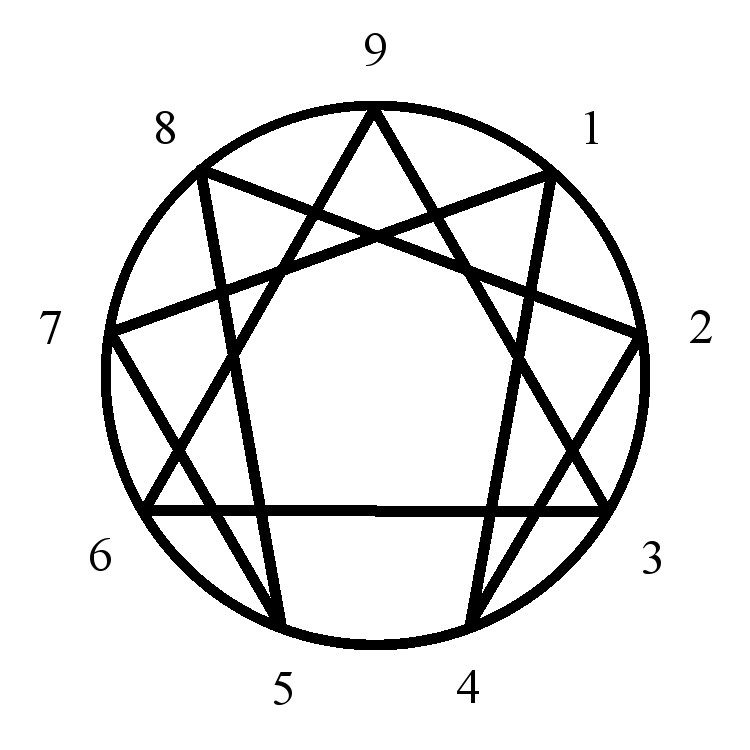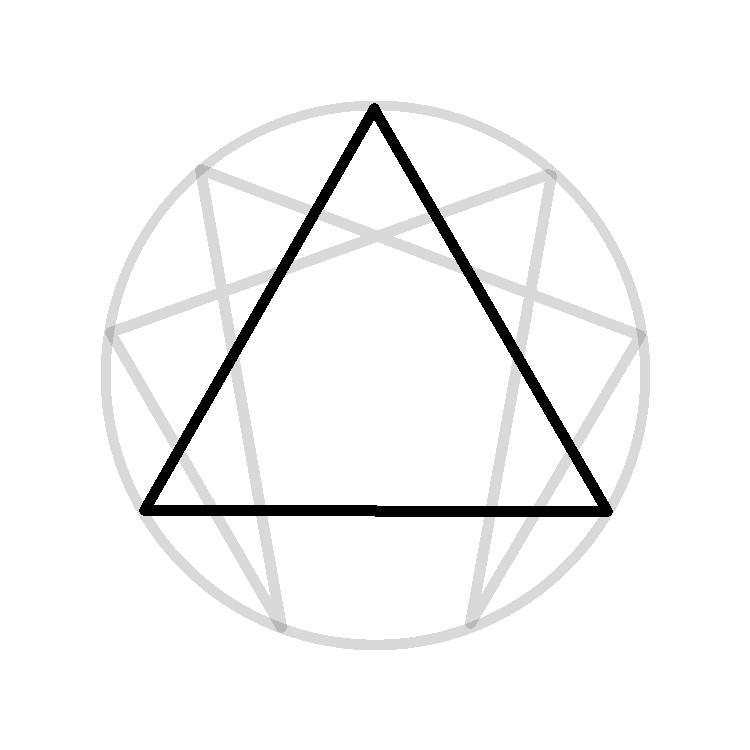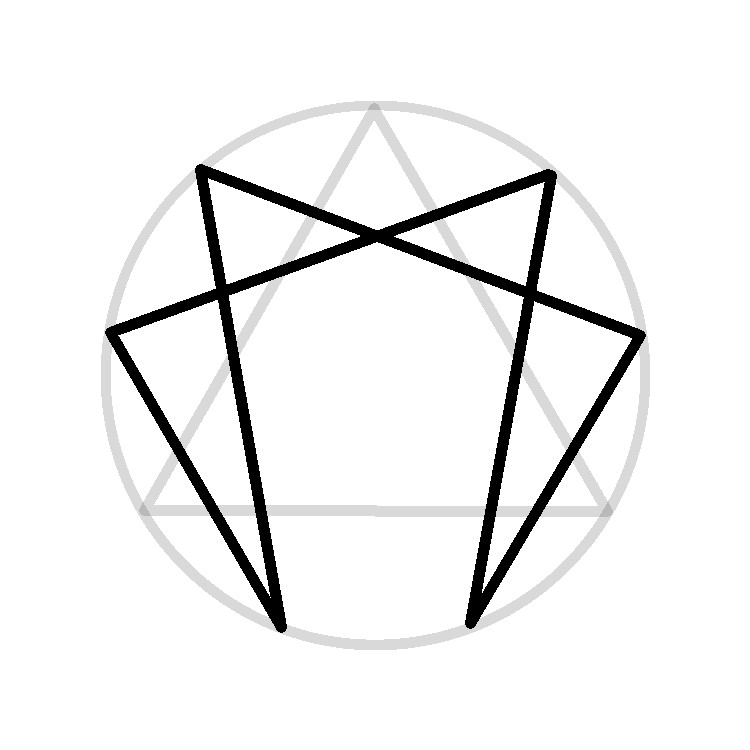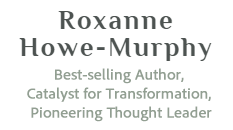What is the Enneagram?
The Enneagram is a integrative body of wisdom that leads to a wholistic understanding of self, and helps the user to awaken to the mystery of his or her unique true nature which lies beyond the personality structure. It fuses ancient sources of knowledge with contemporary psychological perspectives and, more recently, with neuro-biological research
In recent years, the Enneagram has become widely used as a typing system, with many people trying to find their Enneagram type or number. Being able to identify one’s dominant way of orienting to themselves and to their environments is a vital step because it shows us the particular nature of our egoic self. But this is just the beginning of a journey of self-awareness that gives us both the unprecedented view into how that limited version of self obstructs our ability to be present, and shines the light on our expanded nature where egoic activity is no longer our only reality. Rather, our true nature is revealed. From my perspective, far more than a typing system, the Enneagram is one of the most profound systems for real transformation that exists.
The Enneagram provides a powerful framework for accelerating self-knowledge, releasing human suffering, living life with more awareness, flexibility and effectiveness — and for experiencing the expansiveness and liberation of our spirit. Through the Enneagram, we discover that we have always held the key to that which we have been seeking.
A Quick Look at the Enneagram Symbol

The Enneagram symbol itself is ancient. Upon first encounter, it may look quite strange, but in reality, it can be seen as having three main figures: the circle, the triangle and the hexad, with nine numbers associated with each point on the circle. These figures are symbolic of three Laws of the Universe, according to Gurdjieff, who introduced it to the Western world as a symbol for awakening just before WWI. Each of these Laws is based on a principle of Reality, and is relevant for not only our individual lives, our families and communities and our global village, but for all forms of life.
Here’s a brief description of the meaning of each:

The Circle: The Law of One
Words often used with the Circle are ‘Unending,’ ‘Unity,’ and ‘Wholeness.’ This image represents Oneness, that All come from the same Source, birthed from the same particles of energy.
The Triangle: The Law of Three

The triangle is connected to points 9, 3 and 6 on the Enneagram symbol. The triangle represents the triadic nature of reality. Western culture is deeply steeped in dualism, which shows up as the polarities of life, e.g.: either/or, black/white, us/them, you/me, doing/being, day/night, right/wrong, material/spiritual, as examples. Dualism creates struggle as it locks thinking into a narrow set of possibilities, blinding us to potential possibilities and resolutions that transcend the usual way of looking at life. Opening to the triadic nature of life invites us to come into presence, and allows new, unexpected possibilities to arise that are often more deeply satisfying and growth-oriented.
The Hexad: The Law of Seven

We are part of a universe in constant motion. The Hexad is an irregular shape, representing the movement of the life force, consciousness, and change itself. Galaxies are being formed and destroyed. Our own Earth is in constant motion within our solar system, and on this globe itself enormous change is taking place. So it is with every particle, cell, and human being, Evolution and devolution are active dynamics influencing every interaction.
The Nine Points
Each point represents a particular personality type (a particular expression of the human condition and of consciousness) with its own internal blueprint (which you will see visualized in the Iceberg Model in the Deep Living book), inner commentary, and perception of self and of the external world. Each point also represents a specific connection to that which is still, spacious and eternal within — that which is beyond the limitations of the personality.
What really distinguishes one personality type from the other are the underlying (hidden) dynamics or motivations that shape one’s behavior, thinking, and way of being in the world.
An Orientation to Change
Wanting to learn about one’s type often comes with a self-improvement agenda, and a belief that something is wrong within, that something needs to be fixed. Roxanne’s books provide a completely unique way of knowing yourself and of being in the world. For professionals, Deep Coaching offers a counter-intuitive approach to walking with others in the exploration of their personal transformation.
Life is rich, unpredictable, sometimes hard, sometimes joyful, sometimes overwhelming or scary — it gives us a full-range of experiences. Frankly, it’s messy. How do you cope with this messiness? Have you wondered, ‘What is going on? I have no idea what I’m supposed to do!’ Or, perhaps, ’whatever I’m doing, it just isn’t working.’ The truth is that none of us came into this world consciously knowing how to be here, how to love, how to be fully human.
Whether you are a longtime meditator, have studied a great system of spiritual wisdom, have done years of therapy or are new to the realm of self-knowledge and transformation, the Enneagram can offer you precise insights not easily arrived at through other means.
Wherever you are in your soul’s journey and whatever traditions or tools that you currently follow in your psychological and spiritual work, the Enneagram can fill in many missing pieces and help accelerate the emergence of knowing your true nature. Deep Living translates and integrates the Enneagram throughout this journey of development, awakening and evolving, making it accessible to readers.
This approach calls forth the qualities of inner receptivity, compassion, curiosity, and acceptance of your very nature. These qualities support you in increasing access to your innate, deeper intelligence, and offers an authentic and expanded sense of self.
I call this approach to the Enneagram a Map of Love.
Roxanne’s


